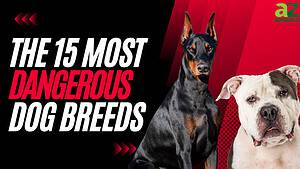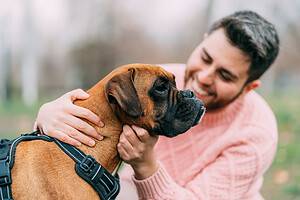There is a long-established belief that dogs can smell your fear. It is very common to hear a dog owner tell their visitor not to panic as the dog bares its teeth. The idea is that, when you show fear to a dog, the dog can smell it and become afraid itself and thus see you as a threat. In recent years, many scientists have conducted independent research into this long-held belief with a focus primarily on dogs’ sense of smell.
For millennia, dogs have been employed in search and rescue missions. This is mainly because of their superlative sense of smell and their keen sense of perception. Trained dogs possess a heightened sense of smell which enables them to sniff out crime suspects, drugs, and bombs. In the same fashion, dogs’ sense of smell has found new applications in the field of medicine. Even detecting cancer, tuberculosis, and most recently malaria in humans.
Beyond all these, the powerful sense of smell of man’s canine friend goes deeper than picking up scents given off by physical objects only. Recent studies have shown that dogs can also smell some human emotions, including fear from the chemicals produced by the human body. To begin with, let’s examine the dynamics of dogs’ sense of smell.
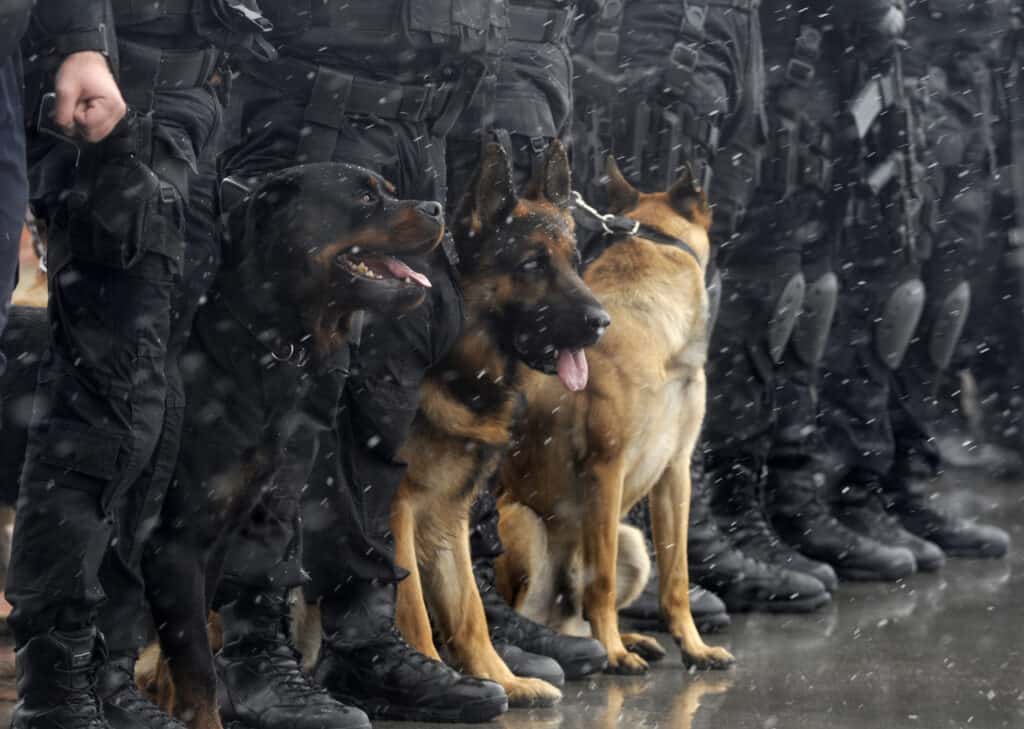
Trained dogs can sniff out drugs, bombs, and more, making them incredibly useful for law enforcement and the military.
©bibiphoto/Shutterstock.com
The Olfactory Senses Of A Dog
A dog can easily identify the natural smell of its owner even when he is wearing very strong cologne. The armpits of a human for instance have a natural smell that comes from the secretions of the apocrine gland. Your friend may not be able to pick up this smell if you are clean and wearing cologne, but you can not fool your dog. It can smell you for who you are despite your deodorant. Ideally, dogs can pick up a smell from a distance of up to 15km. This is connected to the sizable amount of olfactory receptors present in their noses. This can range between 250 and 300 million depending on the dog breed. The Bloodhound species has the keenest sense of smell. The Basset hound, Belgian Malinois, Labrador retriever, and the herding breeds follow closely behind.
In addition to their numerous olfactory receptors, dogs have an anatomical feature that further enhances their sense of smell. Within the nasal cavity of a dog lies Jacobson’s organ, otherwise known as the vomeronasal organ. This special organ connects a dog’s nasal cavity to the roof of its mouth just behind the upper incisors.
By function, the vomeronasal organ serves as a secondary olfactory system for chemical communications. The vomeronasal nerves are morphologically different from the nerves within the olfactory tissue in a dog’s nose. These atypical nerves lead directly to the dog’s brain and only respond to special odor signals. They are able to detect odors that are naturally undetectable by most animals. Comparatively, an average human has about six million olfactory receptors. The area of a dog’s brain that analyses smell in dogs is more than 40 times greater than in humans. Simply put, for every single olfactory receptor that a man has, a dog has up to 50.
This means that dogs have a sense of smell up to 1000 to 10000 times stronger than ours. Even more sensitive than the most advanced sound-picking instruments ever made by man.
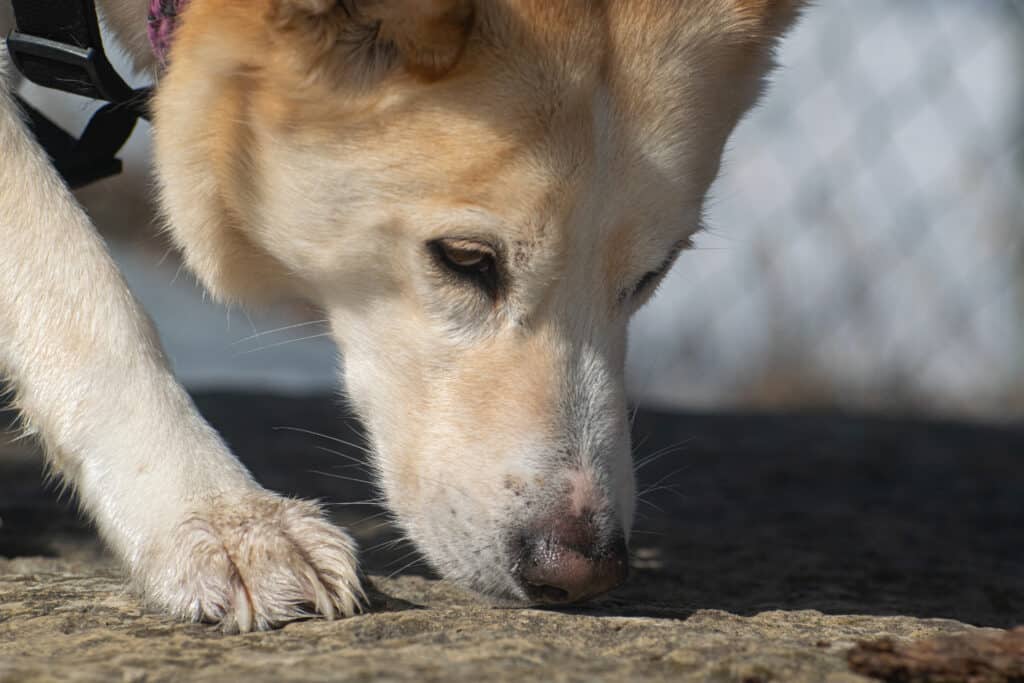
Dogs have a sense of smell up to 1000 to 10000 times stronger than ours.
©Klod/Shutterstock.com
How A Dog’s Nose Functions
Scientific studies have shown that dogs’ noses function in a different design than our own due to anatomical differences. Respiration and olfaction in humans occur through the same airway. However, dogs have different passages for these two functions. A dog has a fold of tissue in its upper airway that enables it to separate the function of breathing from smelling.
When we breathe out air through our nose, we block out odors coming in because the odors and the exhaled air are passing through the same airway. On the other hand, the air exhaled by dogs takes a different route from the odor passage, the air goes out through the slit-like openings on the sides of their noses. In effect, dogs are able to sniff more than humans.
In addition, dogs can independently wiggle their nostrils. This means a dog can determine which nostril the odor arrived in and can easily locate the direction of the smell. This is what happens when we see a dog weaving forth and back in a particular location, having picked up a smell that caught its interest.
Dogs Can Smell Fear And Other Emotions In Humans.
You can fool your friends by masking your fear with a broad smile, but this charade is not going to work on a dog because of its incredible ability to smell fear. When we are unnerved by a situation, stress hormones become secreted into our bloodstream, particularly cortisol and adrenaline (epinephrine). The circulation of epinephrine through the body brings about some physiological changes such as an increase in heart rate, blood pressure, pulse, and sweating among others. A dog can easily perceive the smell of your sweat. It is not enough to conclude that a dog will sense your fear only because you are sweating.
Part of the physiological responses to fear also includes a fight and flight response. You will instinctively want to fight back or flee from the situation which may lead to reflexive movements that will give you away, no matter how subtle. Dogs are very intelligent animals. In addition to the smell of sweat and the other chemicals your body is releasing, a dog can detect your body language, and the defense mechanism you employ to conclude that you are indeed afraid. When a dog smells fear on you, its aggression becomes heightened and may end up attacking you.
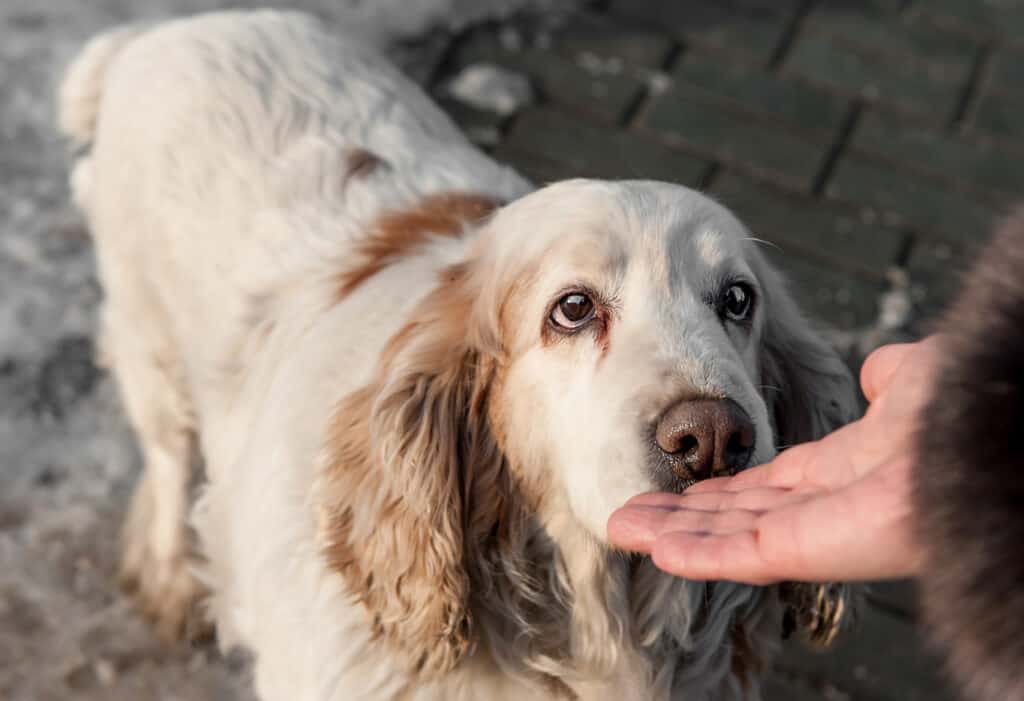
A dog that smells fear on you may become more aggressive.
©Medvedeva Oxana/Shutterstock.com
The Research That Proved Dogs’ Ability To Smell Fear
Scientists have been fascinated by the widely held belief about dogs’ ability to smell fear. In January 2018, the Animal Cognition journal reported that a team of researchers led by Dr. Biagio D’Aniello, a neurobiologist at the University of Naples Federico II carried out an experiment to find out if dogs could detect some human emotions from the chemicals present in sweat. The sweat samples were taken from humans under emotional conditions of fear and elation.
The team obtained samples of armpit sweat from males—some samples were taken from men who had earlier been exposed to happy videos for the purpose of the experiment; Some other samples were taken from men exposed to scary videos. The third category was a control experiment in which no sweat was used at all. The sweat samples were then randomly presented to Golden Retriever and Labrador Retriever participants to smell.
The study was conducted in a calm environment. The dogs were made to stand in front of the humans from whom the sweat samples were obtained.
The Results Of The Experiment
Dogs exposed to sweat from someone who had seen scary videos (someone who was afraid) showed different behavior than the dogs exposed to sweat from a happy person (someone who had seen happy videos. It was observed that the dogs that were exposed to the sweat from startled men showed indications of stress and increased heartbeats.
To sum this up, it is indeed very true that dogs can detect emotion from the chemicals produced by the human body. You should note that a dog can truly see you for you, there’s no hiding your fear in front of a dog. It can smell the chemicals in your sweat and read the subtle display of anxiety.
Up Next…
Check out some of our other dog articles below.
- Can Dogs See In The Dark – Find out if dogs can see as well as cats do in the dark.
- Why Dogs Smell Butts – The real reason may surprise you.
- Why Dogs Roll In Poop – Read on to know the real reason your dog rolls in stinky things!
The photo featured at the top of this post is © iStock.com/brunorbs
Ready to discover the top 10 cutest dog breeds in the entire world?
How about the fastest dogs, the largest dogs and those that are -- quite frankly -- just the kindest dogs on the planet? Each day, AZ Animals sends out lists just like this to our thousands of email subscribers. And the best part? It's FREE. Join today by entering your email below.
Sources
- Pet MD, Available here: https://www.petmd.com/dog/pet-lover/can-dogs-smell-fear
- The Cynophobia Clinic, Available here: https://www.thecynophobiaclinic.com.au/2019/03/20/can-dogs-smell-my-fear-how-dogs-react-when-youre-afraid-of-them/
- Science Focus, Available here: https://www.sciencefocus.com/nature/can-dogs-smell-fear/
- New Scientist, Available here: https://www.newscientist.com/article/2150956-dogs-really-can-smell-your-fear-and-then-they-get-scared-too/
- Petful, Available here: https://www.petful.com/behaviors/how-do-dogs-smell-fear-myth/
Thank you for reading! Have some feedback for us? Contact the AZ Animals editorial team.



